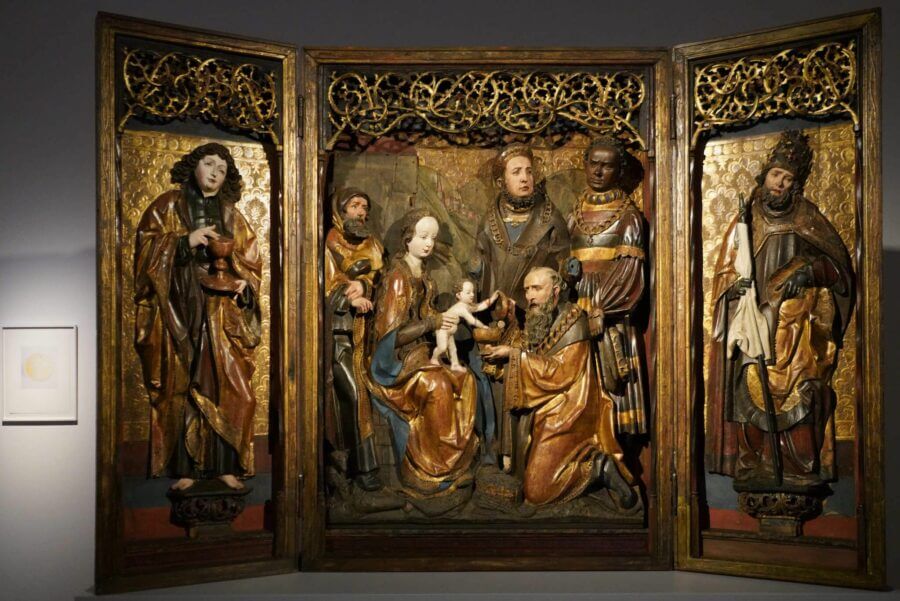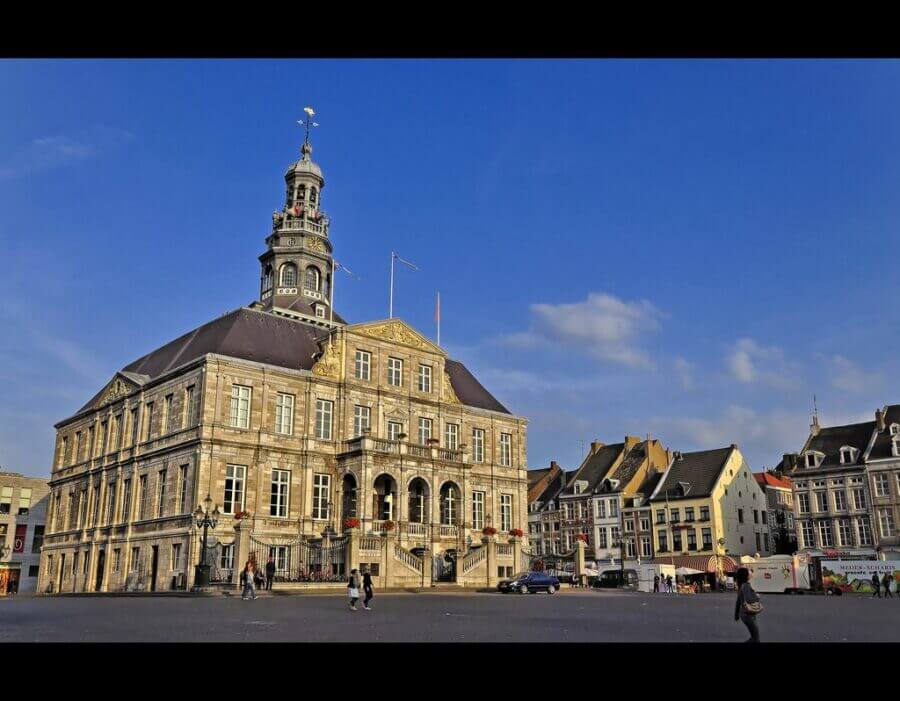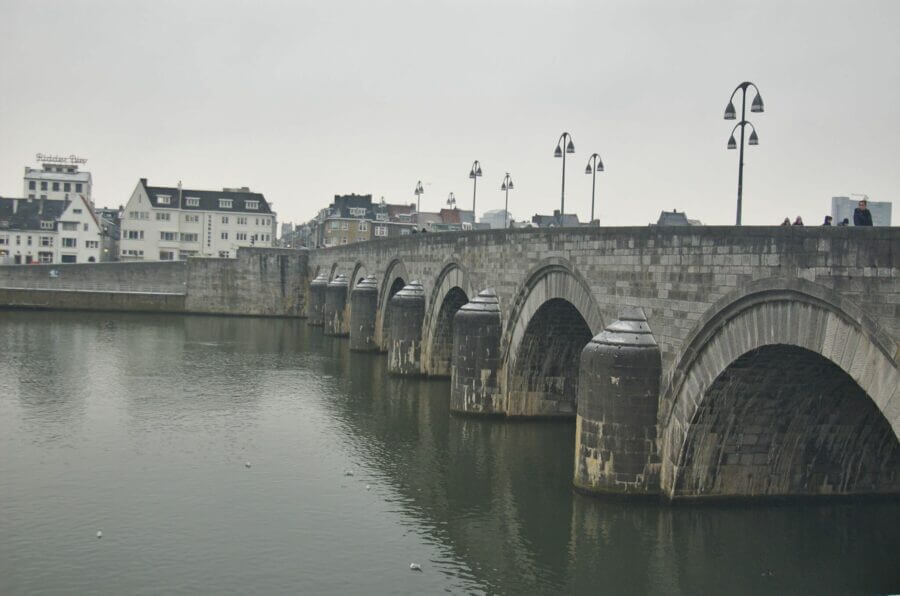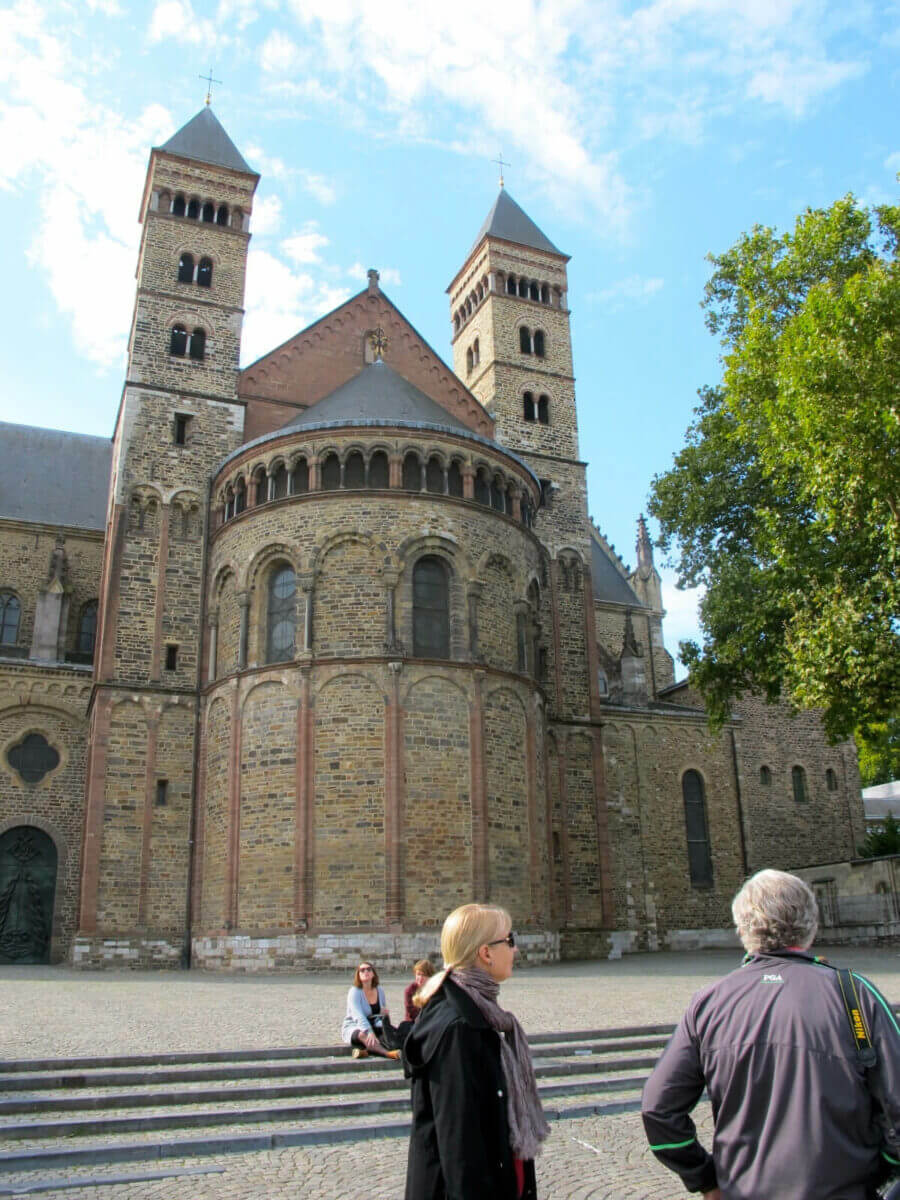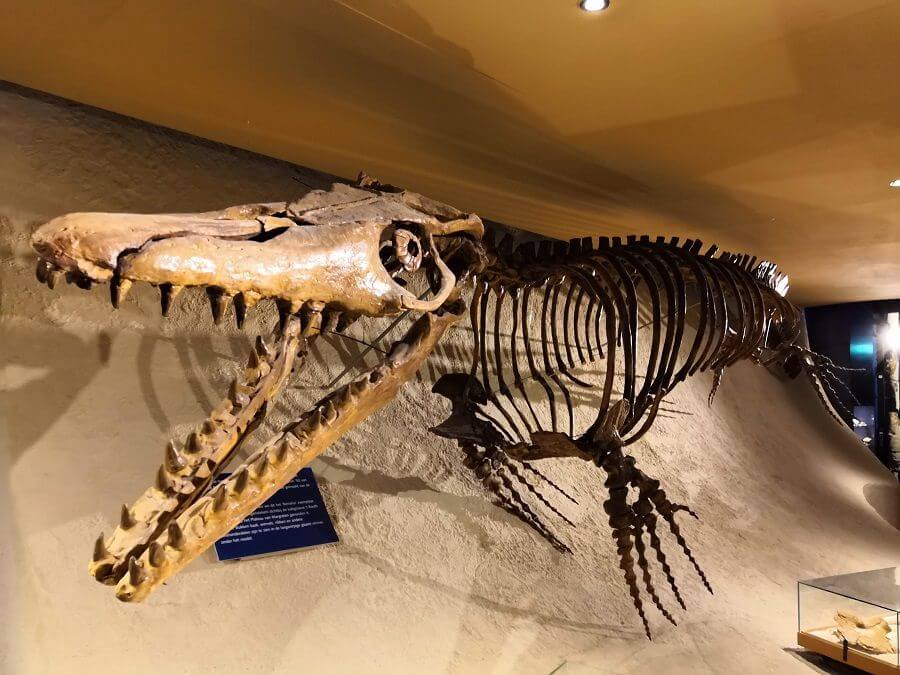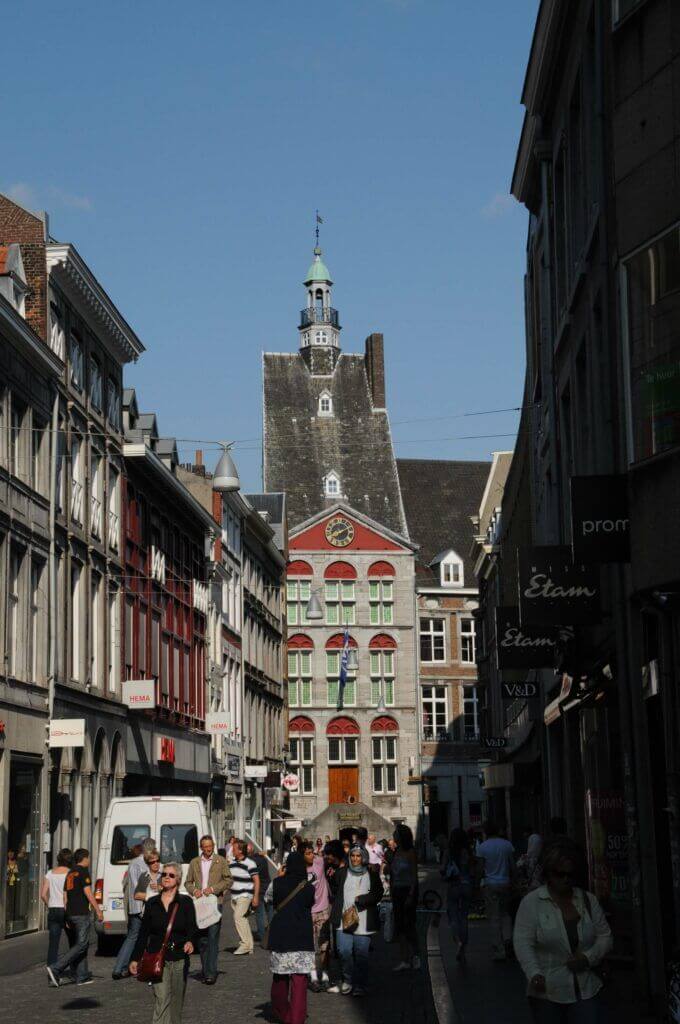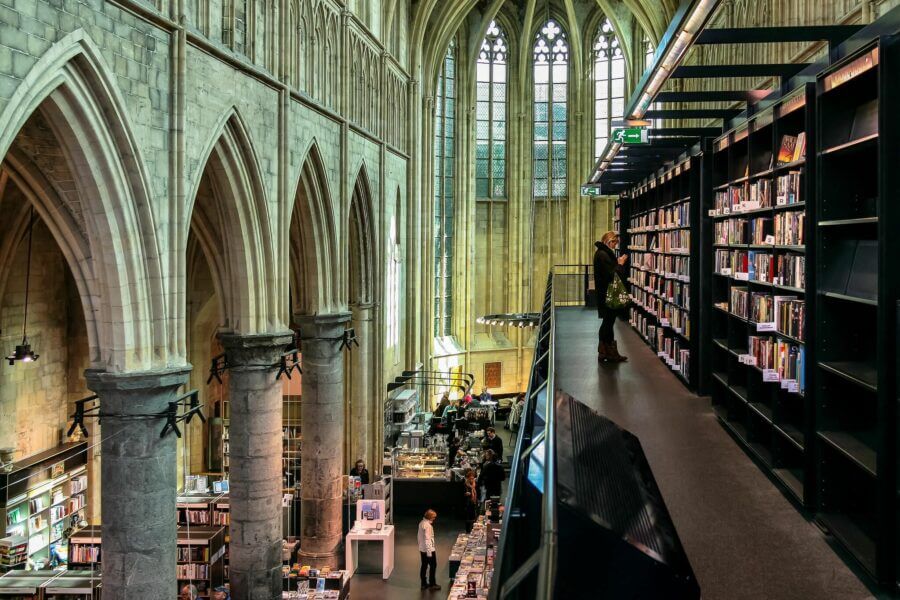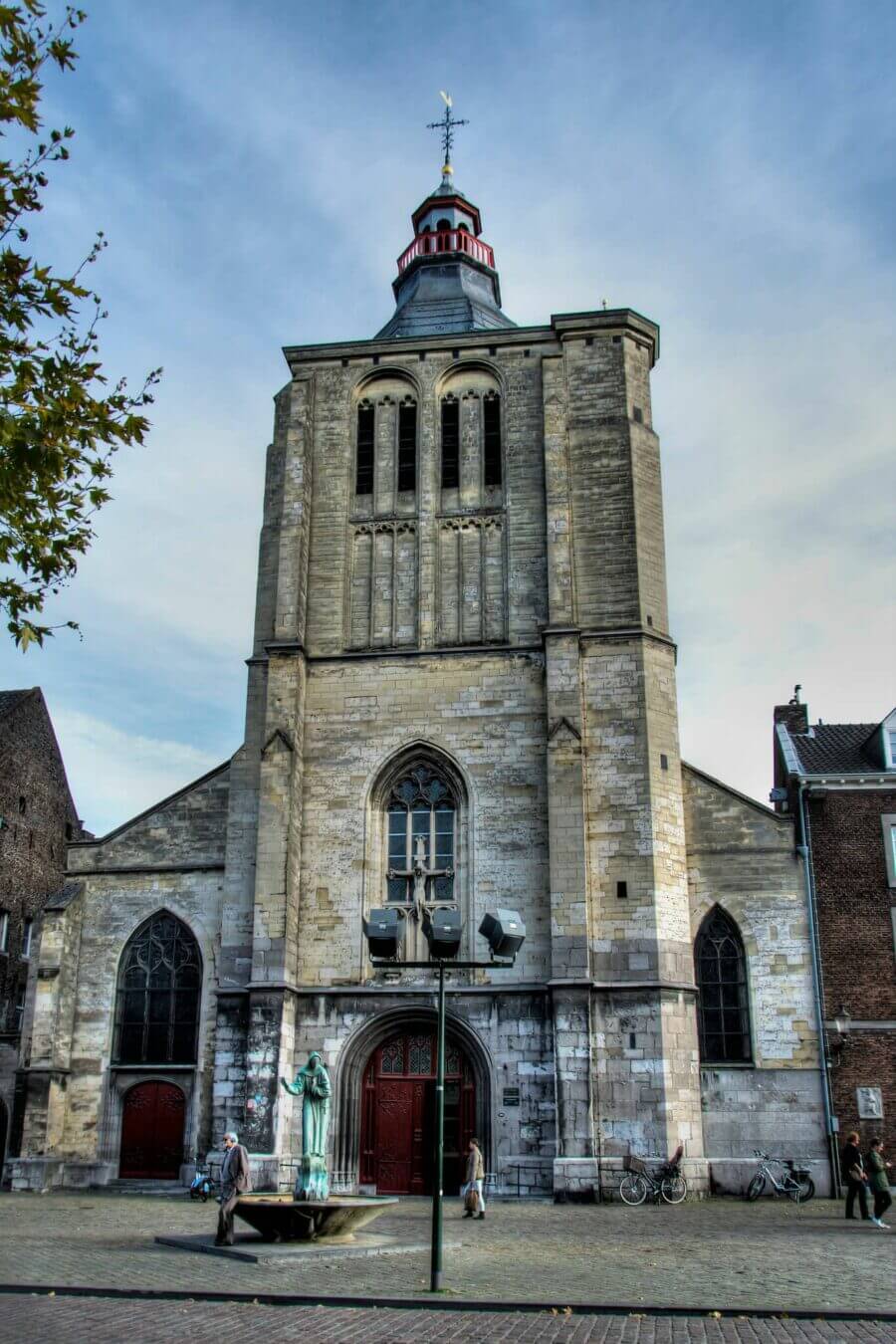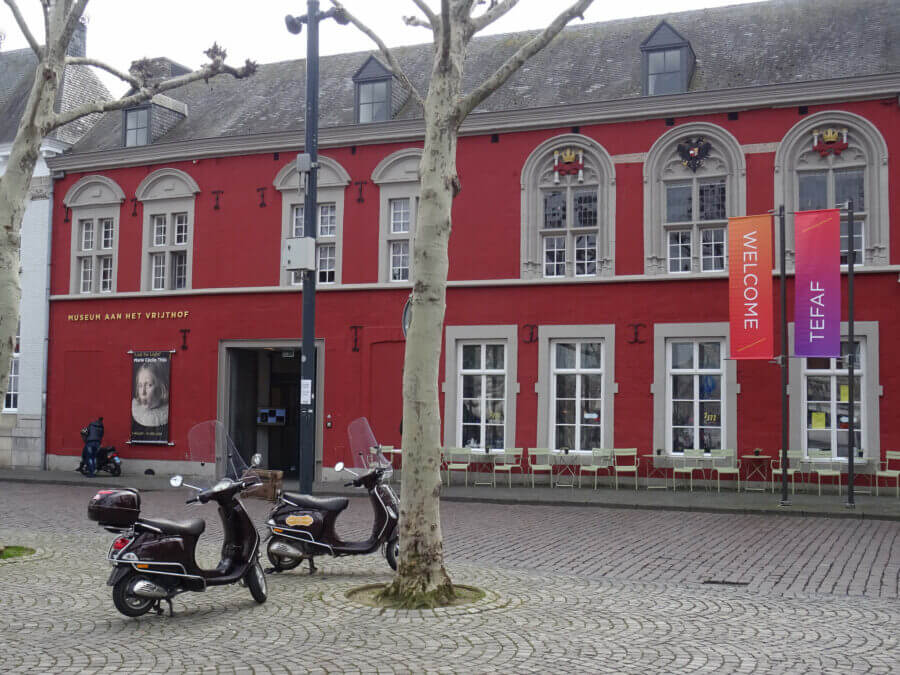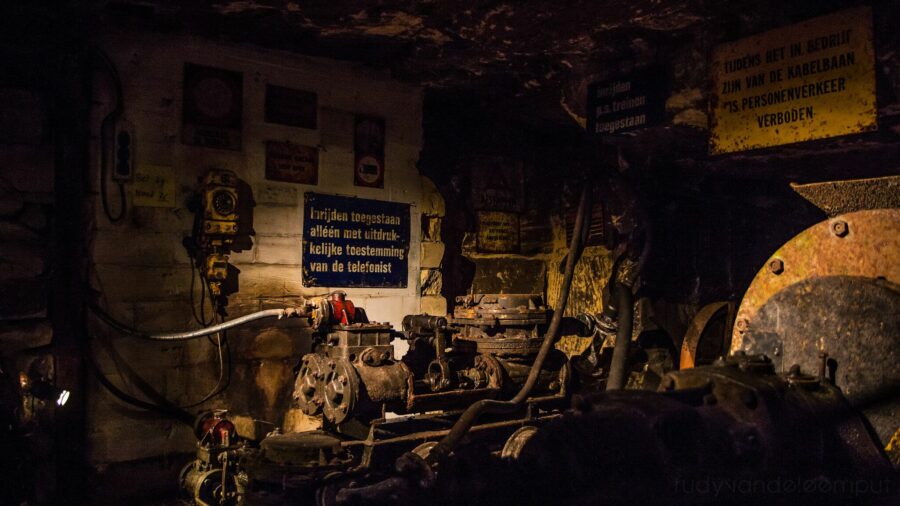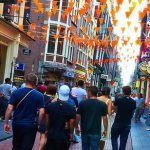3. Go chill on the Vrijthof Square – Maastricht’s most popular square
The Vrijthof is the most famous square in Maastricht and is one of the most pleasant squares for relaxation in the Netherlands. In addition to the cosy terraces that can be found on the square, various entertainment activities are held here. For example, André Rieu regularly gives concerts there. During these concerts, the whole square is packed with people and some even watch from the windows of the surrounding buildings. The Vrijthof also plays an important role during the Maastricht carnival. Every year, the “Mooswief” is hoisted and the carnival monument is the “Het Zaate Herremenieke” on the Vrijthof. Other major events that are organized there are the Maastricht fair and the Preuvenemint. The Preuvenemint is one of the largest and oldest culinary festivals in the Netherlands. Every winter during “Magisch Maastricht,” a large ice rink is built on the square for locals and visitors to skate on. Next to the ice rink, are several stalls where oliebollen, Flemish fries are sold. The square is surrounded by beautiful buildings and churches such as the Sint Servaas Basilica, the Sint-Janskerk, the Theater aan het Vrijthof, the old post office and the Spanish government.
4. Go shopping in the heart of the city
Shopping in Maastricht is an attraction in itself. For the true fashion store, there are more than enough shops to choose from. Shopping in Maastricht is roughly divided into three categories in terms of clothing. There are the cases of the well-known couturiers such as Addy van de Krommenacker, Edgar Vos and Christian Lagerwaard where you can find truly unique pieces. The large chains are well represented in Maastricht. There is a beehive, H & M and much more. And then, of course, the nice little boutiques that you not only find in the direct centre but especially in the small streets. The real shopping heart is mainly around the Muntstraat, Nieuwstraat, Grote Straat, Kleine Straat.
5. Go cycling in Maastricht
Besides all the sights and activities in Maastricht, there is of course much more to do in this Burgundian border town. For example, Maastricht and its surroundings are also a paradise for cycling enthusiasts and hikers. The city is part of many signposted long-distance routes, such as the Ravel route (across the border to Liège) and the LF6 (east to Aachen).
6. Attend the Maastricht carnival and enjoy the festivities
The Carnival in Maastricht is one of the biggest popular festivals in the city. Those who do not like beer and big fancy dress parties should avoid the city around this time. There is no escaping it in the city centre. In Maastricht, the carnival starts on Sunday and after the Mass on Sunday morning, the festive noise begins and both young and old dressed up in the most diverse costumes to mark the beginning of the festivities. Mud straps provide the necessary atmosphere and conviviality, a large pot of beer does the rest. The highlights of the carnival are the procession held on Sunday afternoon and the announcement of the carnival song on Friday. On Tuesday evening at twelve o’clock, the curtain falls and a lot more drinking marks the end of the carnival.
7. Discover Maastricht’s Christmas market
During the Christmas season, everything is organised in Maastricht. The heart of all these events is, as is often the case, the Vrijthof. In the month of December, the square is filled with wooden chalets, an ice rink, various catering establishments and a mega Ferris wheel. If you walk across this Christmas market you can smell the mulled wine, the Liège waffles and other food sold in the Christmas market.
A lot of things can be bought at the Christmas market. From handmade wooden figurines to gloves and of course all kinds of nice Christmas stuff. The Christmas market of Maastricht is by far not the largest in the Netherlands or the area but it is one of the nicest in Limburg.
For the children, there is a mega slide, a merry-go-round, a caterpillar and a nostalgic train.
The rest of Maastricht is beautifully decorated with various Christmas trees and beautiful light artworks. Especially on the market and at the shopping centres Mosae Forum it is beautifully decorated.
8. Visit Coal Mine Valkenburg and discover the nearby town of Valkenburg
Looking to dive into the world of coal mining in the Netherlands? Experience the hard, impressive and adventurous life of coal miners in the heart of Valkenburg! Take a journey into the world of mining in a mysterious underground environment. Unique film material about the mining industry in Valkenburg can be seen at the mine as ex-mineworkers tell their stories during a tour of the Valkenburg Coal Mine.
Note: The Valkenburg Coal Mine and the Jan Kruysen Gallery are accessible for disabled and wheelchair users.



